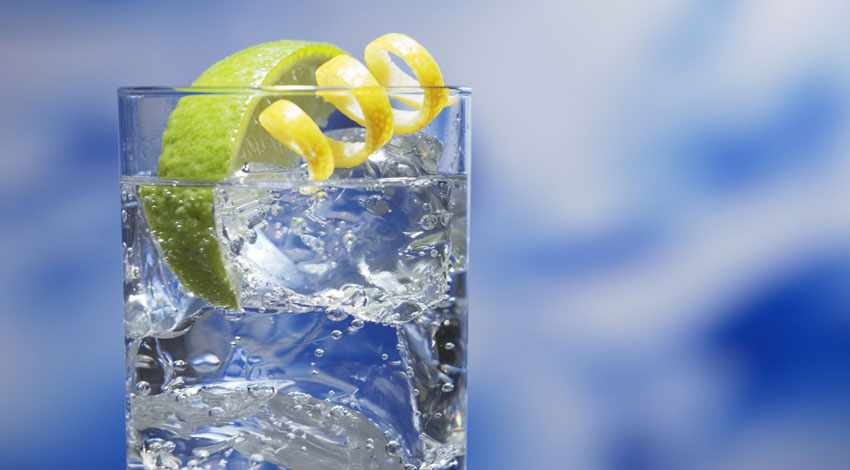There’s no question that the long talked-about renaissance of Gin is now firmly underway.

How different it all is from just 15 years ago. Then, if you were a gin drinker, you were probably middle-aged, fairly conservative and drank gin in the form of a stiff Gin and Tonic before dinner or a dry Martini on high days and holidays. Not that you had much choice. In your local off-licence, you would have found a smattering of traditional brands such as Gordon's and Beefeater and possibly Bombay Sapphire if it were an up market sort of place. In your local bar you would have been served a badly made G&T or a Martini consisting of Martini Rosso.
Fast-forward to now and the choice is almost bewildering. Not only is gin drunk more by a much broader audience, there is also an ever increasing range of brands to tempt your fancy. It’s the same in cocktail bars where bartenders have fallen in love with gin and back bars boast a plethora of smartly packaged gins that will be showcased in extensive gin cocktail menus.
Why the turnaround? Why has gin moved from golf club to nightclub and become the choice of the smart set? The answer lies in gin’s ceaseless ability to reinvent itself from its earliest days as the ‘Dutch courage’ given to steady nerves in battle in the 17th century. Gin’s last real glory days were the 1920s, the age of the new, and for a certain class also the age of the first nightclubs, the first celebrities, Bright Young Things and endless parties fuelled by cocktails made from gin. Gin’s dominance lasted well until the 1950s and early 60s, a time when probably around half of any cocktail list would be made up of gin-based drinks. Gin was the epitome of glamour: to this day, the last take of every Hollywood movie is still called the “Martini shot”.
Then it was overtaken by vodka and began to be seen as old-fashioned and 'fuddy duddy', the drink your parents drank. What changed was the re-emergence of cocktail culture in the 1990s, the launch of Bombay Sapphire aimed specifically at younger drinkers and the rise of consumer connoisseurs who value authenticity and heritage. Now, a whole new generation are rediscovering gin as the ultimate cocktail ingredient associated with the glory days of cool as epitomised by TV shows like Mad Men. Naturally, distillers have been quick to respond. The action is all at the super premium end of the market and it’s all about quality.
s basically a high-quality neutral grain spirit redistilled with a range of botanical flavourings of which juniper is usually but not always the dominant. Crucially, it does not need to be aged.
used spicy botanicals like cassia bark, cardamom and cinnamon or play with lighter, more floralbotanicals like elderflower and meadowsweet.
At the heart of the craft gin movement aresmall London distilleries like Sipsmith andSacred Spirits, who produce excellent ginsthat have been taken to heart by Londonbartenders who are embracing the localfood movement. In London too you willfind The Ginstitute, a small gin museumabove The Portobello Star in PortobelloRoad where you can actually blend yourown gin. Its owners Ged Feltham and JakeBurger recently launched Portobello RoadNo. 171, a gin born out of their ownexperiments now made commercially byThames Distillers in Clapham.
There arealso country-based family businesses likeBramley and Gage, who make a big-tastingtraditional gin suitably called 6 O'Clock,and the Foxdenton Estate, with its beautifullybalanced high-strength 48, as well as arange of fruit-flavoured gins. Othernewcomers to the gin scene include BerryBros. & Rudd, who are seeing great successwith their No. 3 Gin, and Wemyss Malts,who use the floral flavours of elderflower inDarnley’s View and are just about to launcha spicier version for winter cocktails. Thenthere’s the very splendid Fifty Pounds Gincrafted with three secret botanicals.
wave Martinis in mind. And possiblythe most super premium gin you will find in terms of price is Oxley Classic English Gin from Bacardi, who also produce Bombay Sapphire.
Scottish whisky distillers are also busy applying their expertise to gin, with William Grant-owned Hendrick’s Gin pioneering the quest for the new by incorporating rose and cucumber infusions. Caorunn Gin from malt whisky experts Inver House Distillers and The Botanist from Islay-based Bruichladdich both add locally grown herbs and berries to the botanical recipe and have succeeded in producing distinctive gins with a uniquely Scottish character. And whilst the definitive serve for gin will always be the G & T, one now sees a new twist on this old favourite in the Spanish way of serving it in a large balloon glass garnished with fruit, increasingly found in top London bars. There are also a host of other ways to enjoy these new gins like the Elderflower Collins, a mix of gin, lemon juice, elderflower cordial and soda water. Another big trend is for tea-based cocktails like the Early Grey MarTEAni, a delicate mixture of Earl Grey tea-infused gin, sugar and lemon juice, shaken up with egg white and garnished with lemon zest. One thing is certain – the inventiveness of bartenders continues to keep pace with the creativity of the distillers. Let’s raise a glass to that.
*The author, Geraldine Coates, is a writer on gin, the author of 'The Mixellany Guide to Gin' and editor of gintime.com, the world’s first website devoted to gin.














